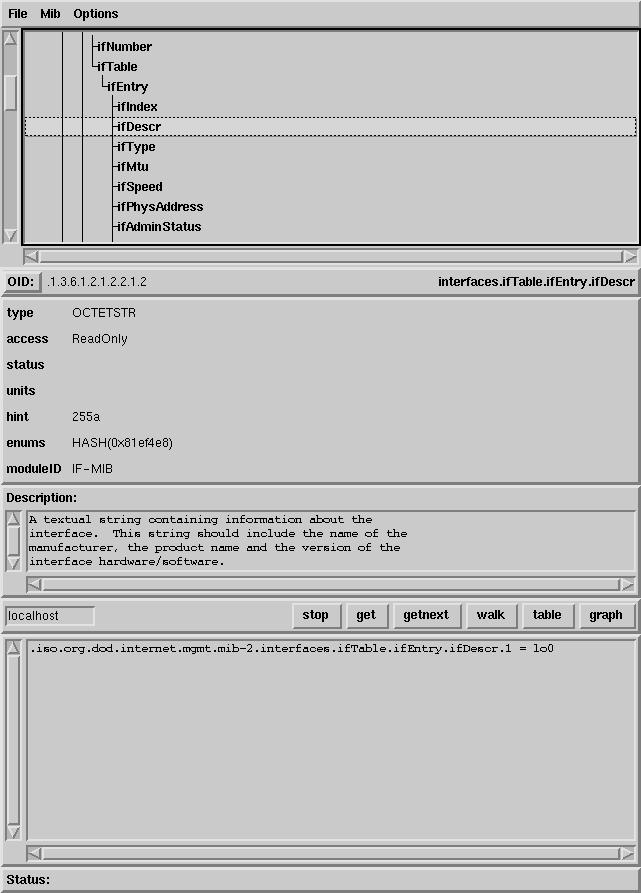An impressive set of tools is available through the
NET-SNMP Home Page.
Using those tools requires some kind of dedicated intranet
since no administrator of a production network is going to
allow students (or professors) to use them on their routers.
If you cannot get access to a router, you can install SNMP
on a host.
If you have a router, you may need to configure SNMP on
it.
Fortunately, this is easy to do.
Just telnet to the router, type enable, enter the enable password,
type config t, and enter something like the following:
- snmp-server community public RO
- snmp-server community private RW
- snmp-server location Goodrich Lab
- snmp-server contact Your Sys Admin
This sets public as the RO, read-only, community string,
private as the RW, read-write, community string, and sets
the location and contact person.
You can now end your telnet session and, for example, type
snmpget .1.3.6.1.2.1.1.4.0 to get the contact information.
Perhaps the most interesting tool is tkmib which allows
you to do pretty much anything the other tools will do, but with
a GUI interface. Documentation is hard to come by, perhaps on the
assumption that the GUI interface is self-explanatory, and it is,
with two important exceptions. Here is a snapshot of the interface
from the netsnmp page:

I have used the version of tkmib that comes with SuSE as
well as one downloaded from netsnmp, and neither has that status
bar. More seriously, the first request often results in the disappearance
of the third panel where the results are shown. Actually, it
has not disappeared, you just need to move your mouse to the bottom,
get the double arrows, and drag it out from wherever it has been
hiding. Then it works fine. A second problem arises with the get
button. Simply put, it never works, and sniffing packets showed the
reason. Let's say that you click mgmt, then mib-2,
then system, and, finally, sysContact. If you click
the get button, your request will fail. Examining the packet reveals
that the request when out as .1.3.6.1.2.1.1.4. If you type snmpget
.1.3.6.1.2.1.1.4, you will be told that there is no such data
member, you need to add a final .0. As you click you will notice
a string being generated. If you manually add a .0 to the string,
tkmib will succeed. This is not that important as the
getnext button will work. However, if you use the set
button, there is no avoiding typing that extra .0.
Apart from these triffling problems, using tkmib is easy.
I just entered the ip address of the router in the box that comes
up as localhost, selected the desired entry, and clicked away.
One major advantage that I see is that this tool shows you the tree structure
very clearly. Please feel free to share your experiences with me on this
one.
This site is maintained by W. David Laverell
of the Computer Science Department
at Calvin College. For assistance or corrections,
please contact him at .

